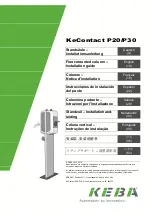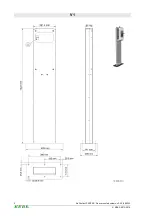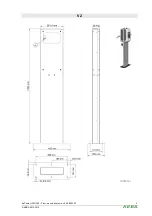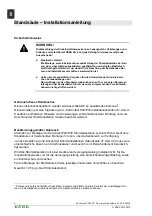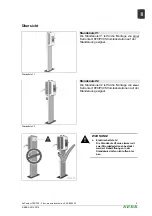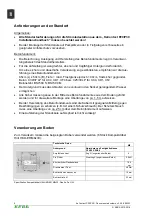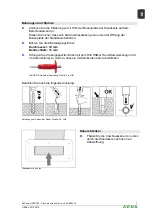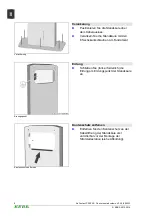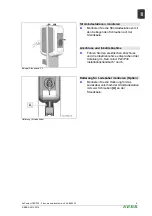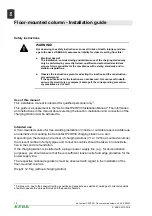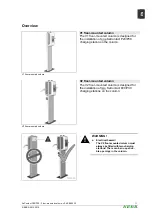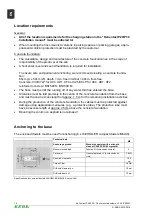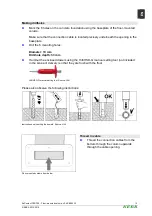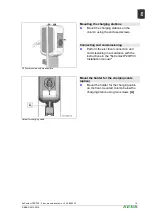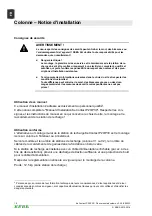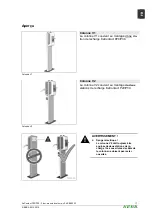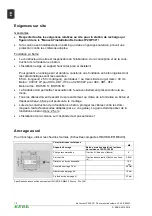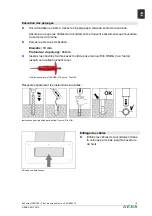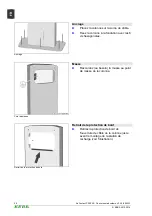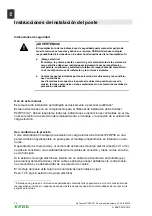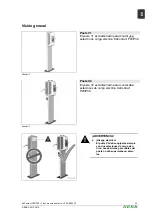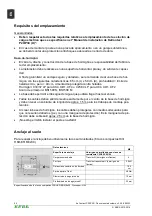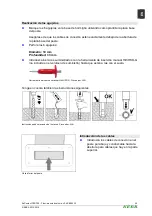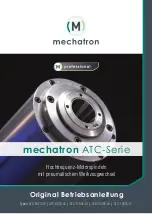
E
N
10
KeContact P20/P30 - Floor-mounted column, v2.40, #90333
© KEBA 2012-2016
Floor-mounted column - Installation guide
Safety instructions
!
WARNING!
Not observing the safety instructions can result in risk of death, injuries and dam-
age to the device! KEBA AG assumes no liability for claims resulting from this!
l
Electrical hazard!
The installation, commissioning and maintenance of the charging station may
only be performed by correctly trained, qualified and authorized electricians
who are fully responsible for the compliance with existing standards and in-
stallation regulations.
l
Observe the instructions given for selecting the location and the construction-
al requirements!
If the specifications for the location are not observed, this can result in death,
serious physical injury or equipment damage if the corresponding precaution-
ary measures are not met!
Use of this manual
This installation manual is intended for qualified personnel only
2
.
This guide is a supplement to the "KeContact P20/P30 Installation Manual." The information
and instructions in the manual about selecting the location, installation and connection of the
charging station must be adhered to.
Intended use
A floor-mounted column for free-standing installation in inside or outside areas is available as
an alternative to mounting the KeContact P20/P30 charging station on a wall.
Depending on the design and number of charging stations (V1 or V2 floor-mounted columns)
the relevant number of empty pipes and connection cables should be taken into considera-
tion in the concrete foundation.
If the charging station is installed with a plug-in power supply line (e.g., for demonstration
purposes), you should ensure that there is sufficient tension relief and edge protection for the
power supply line.
The respective national regulations must be observed with regard to the installation of the
floor-mounted columns.
Weight: 12.5 kg (without charging station)
2
Persons who, due to their special training, expertise and experience as well as knowledge of current standards,
are able to assess the work performed and the possible hazards.

